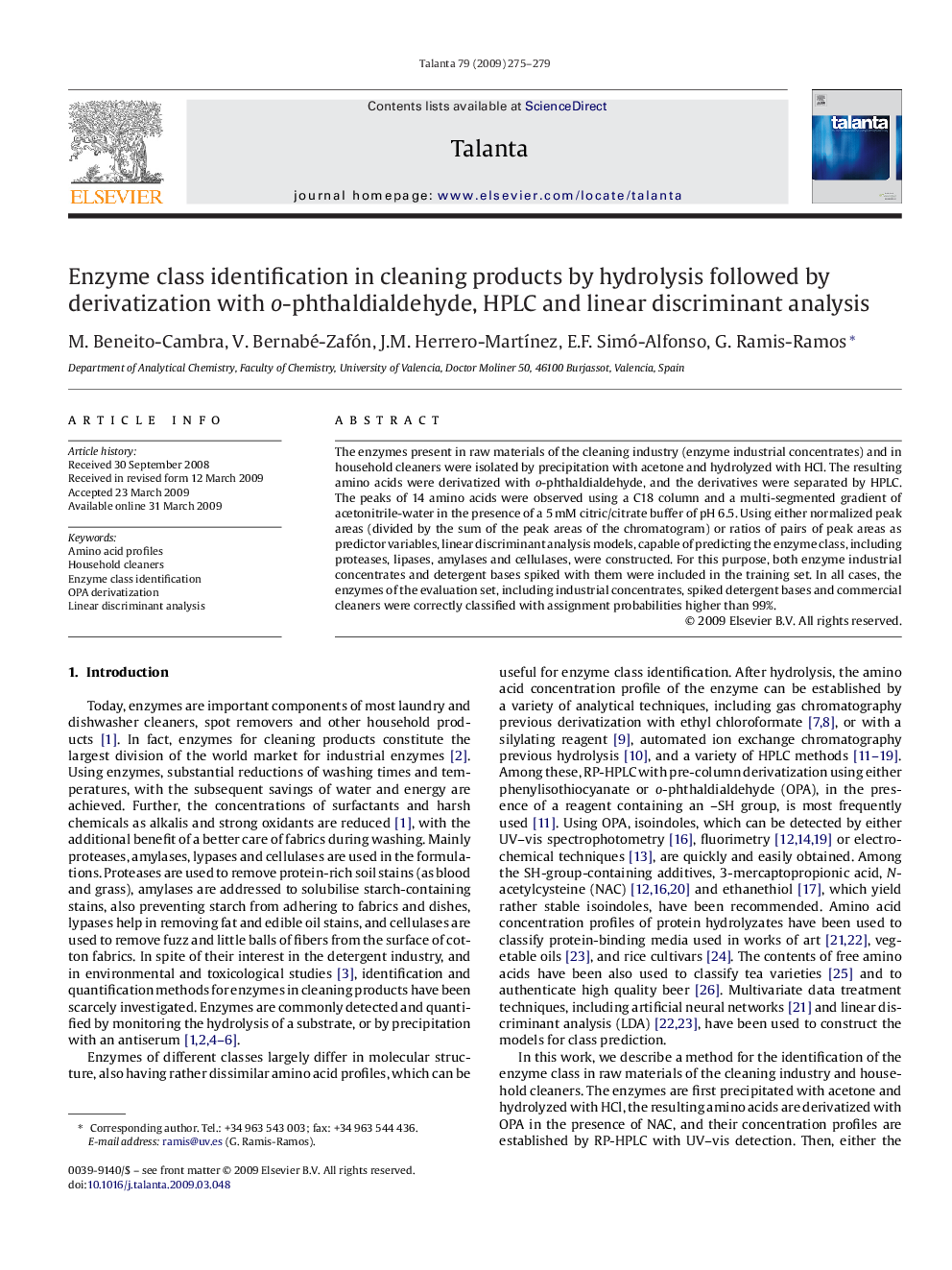| Article ID | Journal | Published Year | Pages | File Type |
|---|---|---|---|---|
| 1244800 | Talanta | 2009 | 5 Pages |
The enzymes present in raw materials of the cleaning industry (enzyme industrial concentrates) and in household cleaners were isolated by precipitation with acetone and hydrolyzed with HCl. The resulting amino acids were derivatized with o-phthaldialdehyde, and the derivatives were separated by HPLC. The peaks of 14 amino acids were observed using a C18 column and a multi-segmented gradient of acetonitrile-water in the presence of a 5 mM citric/citrate buffer of pH 6.5. Using either normalized peak areas (divided by the sum of the peak areas of the chromatogram) or ratios of pairs of peak areas as predictor variables, linear discriminant analysis models, capable of predicting the enzyme class, including proteases, lipases, amylases and cellulases, were constructed. For this purpose, both enzyme industrial concentrates and detergent bases spiked with them were included in the training set. In all cases, the enzymes of the evaluation set, including industrial concentrates, spiked detergent bases and commercial cleaners were correctly classified with assignment probabilities higher than 99%.
